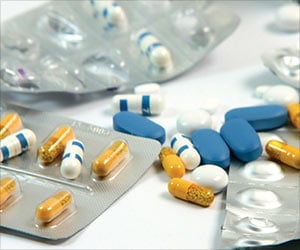A Lancet shows that Abbott’s bioabsorbable drug eluting stent works successfully.
A Lancet shows that Abbott’s bioabsorbable drug eluting stent works successfully. It was absorbed into the walls of treated arteries within two years.
The two-year data also demonstrated that after the bioabsorbable device was absorbed, the treated blood vessels appeared to move and function similar to unstented arteries.Preliminary findings from the 30-patient ABSORB trial were presented in October 2008 at the Transcatheter Cardiovascular Therapeutics annual meeting in Washington, D.C.
"Abbott's bioabsorbable drug eluting stent leaves behind a vessel that expands and contracts in a manner similar to a vessel that has never been stented, which could be an advantage over permanent metal-based stent implants," said Patrick W. Serruys, professor of interventional cardiology at the Thoraxcentre, Erasmus University Hospital, Rotterdam, the Netherlands; lead author of The Lancet publication; and co-principal investigator of the first phase of the ABSORB trial. "This bioabsorbable device has the potential to provide optimal vessel scaffolding and drug delivery capability over the crucial first several months after a stenting procedure while avoiding the long-term restrictions of metallic stents."
The ABSORB trial is the world's first clinical trial evaluating a fully bioabsorbable drug eluting coronary stent, and advanced imaging methods were used to assess patient outcomes. As published in The Lancet, the first phase of the ABSORB trial demonstrated the following key results:
A zero percent rate of stent thrombosis (blood clot formation) for all patients out to two years of follow up.
No new major adverse cardiac events (MACE) between six months and two years. At two years, the bioabsorbable device demonstrated a MACE rate of 3.6 percent (one patient). MACE is defined as any event that resulted in re-treatment of the treated artery lesion, heart attack or cardiac death.
Advertisement
Restoration of vasomotion (ability of the blood vessel to contract and expand) was observed at two years, with the drug acetylcholine used in nine patients showing vasodilation in the previously stented area, and the drug methergin used in seven patients showing vasoconstriction in the previously stented area.
Advertisement
"Abbott's bioabsorbable stent may be a major breakthrough in the treatment of narrowed coronary arteries. The two-year ABSORB trial results show that the bioabsorbable device did its job of relieving coronary obstructions and preventing re-narrowing, and that it did this safely," said John Ormiston, M.D., medical director at Mercy Hospital in Auckland, New Zealand and principal investigator in the first phase of the ABSORB trial. "With no rigid stent remaining, vasomotion, the natural movement of the artery, was restored, and the artery appeared to behave like a normal artery. Who would want a permanent device if a temporary one may do the job and then disappear?"
Abbott is the only company with long-term clinical data evaluating the safety and performance of a bioabsorbable drug eluting coronary stent out to two years. Abbott's bioabsorbable everolimus eluting coronary device is made of polylactic acid, a proven biocompatible material that is commonly used in medical implants such as dissolvable sutures. As with a metallic stent, Abbott's bioabsorbable stent is designed to restore blood flow by propping a clogged vessel open, and to provide support until the blood vessel heals. Unlike a metallic stent, however, a bioabsorbable device is designed to be slowly metabolized by the body and completely absorbed over time.
"Abbott has consistently been at the forefront of advances in interventional cardiology, from the early days of angioplasty to our continued success with bare metal stents and the market-leading XIENCE V drug eluting stent. Our bioabsorbable device is another example of scientific innovation leading to an interventional breakthrough," said John M. Capek, executive vice president, Medical Devices, Abbott. "The data publication in The Lancet confirms the promise our bioabsorbable device holds as a vasorestorative therapy for patients with coronary artery disease."
Abbott will begin enrolling patients in the second phase of its international ABSORB clinical trial in the first half of 2009.
The ABSORB trial is a prospective, non-randomized (open label), two-phase study designed to enroll approximately 110 patients in Australia, Belgium, Denmark, France, the Netherlands, New Zealand, Poland and Switzerland. Key endpoints of the study include assessments of safety, MACE and stent thrombosis rates, at 30 days, six, nine and 18 months, and one and two years, with additional annual clinical follow-up for up to five years, as well as an assessment of the acute performance of the bioabsorbable drug eluting stent, including successful deployment of the stent. Other key endpoints of the study include imaging assessments by angiography, IVUS, OCT, and other state-of-the-art invasive and non-invasive imaging modalities at six and 18 months, and at one or two years.
Abbott's market-leading XIENCE V™ Everolimus Eluting Coronary Stent System was approved by the U.S. Food and Drug Administration and launched in July 2008, and was launched in Europe and other international markets in October 2006. XIENCE V is an investigational device in Japan and is currently under review by the Ministry of Health, Labour and Welfare and the Pharmaceuticals and Medical Devices Agency, according to a press release.
Source-Medindia
GPL









